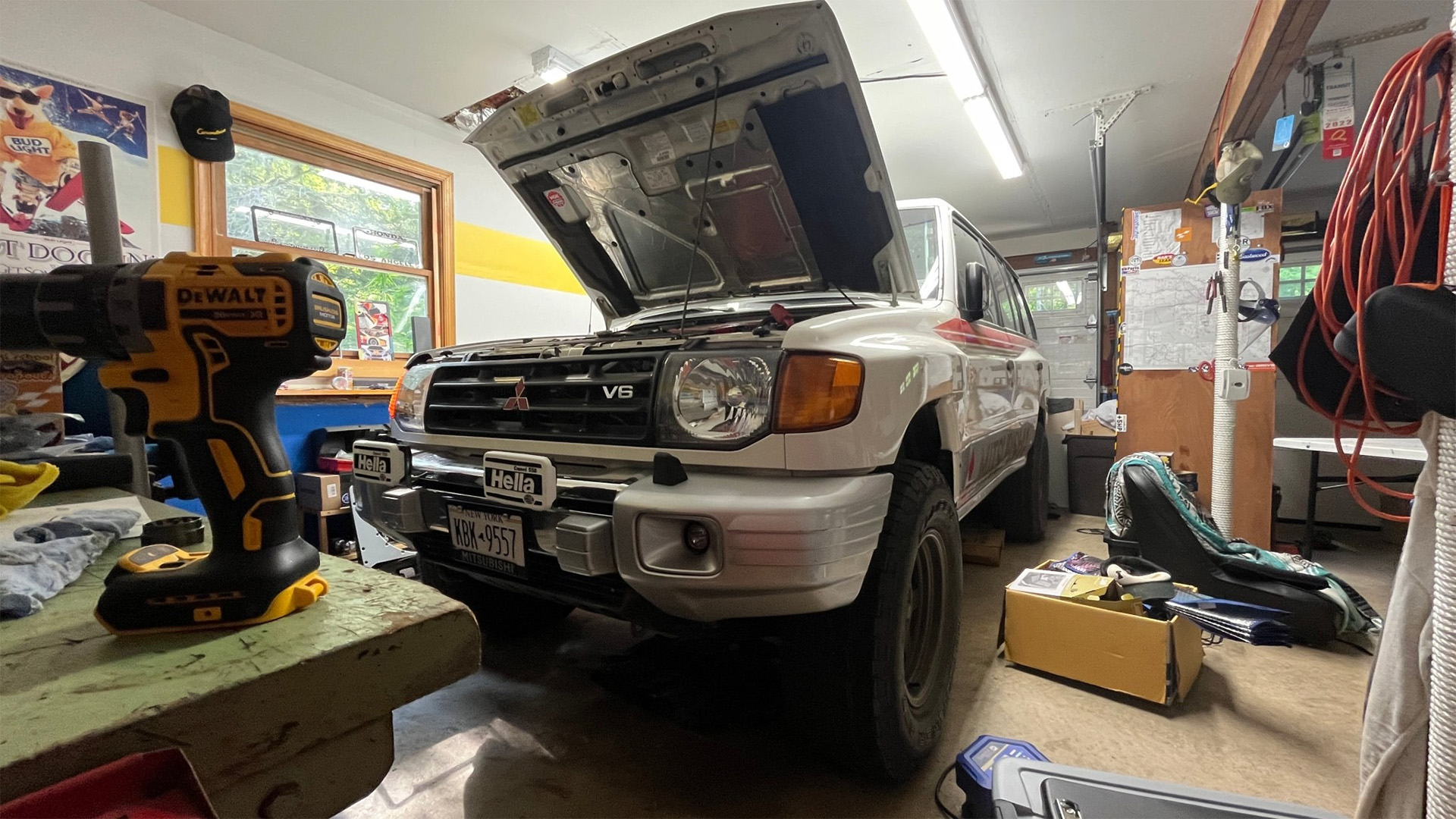

I have been obsessed with vehicles since childhood. Sadly, I don’t have a natural talent for mechanical engineering and its adjacent sciences. I’m not particularly strong and only have six fully functional fingers. Working on cars is not something that’s come easily to me, but it’s brought me a lot of joy. Well, I say “joy,” but anybody who’s had a project car knows that the relationship between man and machine is always… complicated. Nevertheless, overcoming the mental hurdle of “what if I make a mistake?” has been harder than learning to wrench with a bum hand.
Over the holiday weekend, I started putting my Montero back together. It’s been sitting static for months since I pulled its front bumper off to mount some fog lights. It was a straightforward project. Easy, even.
What kept me from finishing this one for so long is so embarrassing, but I’m hoping to ultimately inspire you here. I just couldn’t decide how to mount the lights. “What if this doesn’t look good,” I kept thinking to myself, positioning the lights over and over again on the bench. I’d been paralyzed with indecision to the point where I’d go to the garage, fart around with some configurations of the lights, then just procrastinate by doing something else on a different car or not working at all to kick the decision down the can.
Finally, I got hit with a lightning bolt of sanity when I simply wanted to drive my damn Montero. “Oh, right, the whole front bumper’s off,” I thought as I opened the door to the workshop where it’s been resting. A few bracket cuts later, the lights were installed, and then re-attaching the bumper was a simple four-bolt affair (gotta love old trucks).
The epiphany, funny enough, came at this point when I saw the truck and decided I didn’t really like my light-mounting solution after all. All those weekends of thinking about how to position them, all those times I was weirdly afraid of doing it wrong… and, yep, I had done it wrong. I had to shake my head at myself here. Like, who cares? All I have to do is pull a few bolts and try it again. It’s not that deep.
Indecision paralysis is similar to another inner roadblock that’s plagued me: the fear of fucking up. Is “FOFU” a recognized condition in psychology journals yet?
Don’t get me wrong—it is possible, sometimes easy, to cost yourself a lot of time and money while making a rookie mistake teaching yourself to DIY. But projects are always easier the second time. If you start with straightforward stuff, and cross reference YouTube tutorials with an actual Haynes manual, you’ll probably get the critical moves correct and if you didn’t nail it the first time, the second attempt will be much easier. I lost track of how many times I installed and removed the coilovers on my Civic because I needed to see for myself what the different ride height settings looked like.
Of course, it’s not quite as easy to be flip when the stakes are really high, like torquing head bolts on a fresh engine rebuild or doing a timing belt on an interference engine. But if you start slow and start small, you’ll have long overcome your FOFU by the time you take on tasks at that level.
When you’re just starting out, accepting the possibility of failure and that the initial swing might not always be perfect, can be a useful first step in your journey as a tinkerer.
One of the most important things having a project car has taught me, as a decidedly non-professional wrench, is to appreciate the journey. Reading and researching and learning from the wins and losses of others on forums or Facebook groups is useful and important. But on your quest to make a car your own, don’t be afraid to try something. And most importantly, don’t drive yourself nuts insisting on immediate perfection all the time.